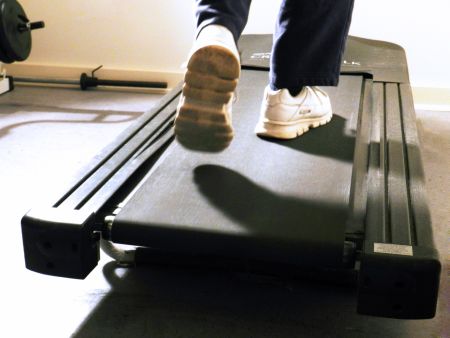Though weight gain is something most people deal with at some point, obesity is an extreme example of uncontrolled weight gain can become. The Center for disease control estimates that over one third of the US adult population is considered obese. Defining obese as a person with over 30% body fat. This degree of obesity can cause life-threatening complications such as diabetes, heart disease, stroke, certain types of cancers and even death. Fortunately, most cases of obesity are completely preventable. Living a healthy lifestyle with the right diet and exercise routine ensures weight loss and prevents future weight gain and even diseases.
Staying in shape doesn't require elaborate workout routines; running, walking and swimming are simple, great exercise methods that quickly mold fat pounds into muscle. For those desiring a more individualized experience, Personal trainers help by providing motivation and assistance to key areas that need work. They assist with diet and personalized exercise routines that are specific for the individual's needs.
A few simple rules are helpful as you develop your own routine.
Don't eat for 2 hours before vigorous exercise.
Drink plenty of fluids before, during, and after a workout.
Adjust your activity level according to the weather, and reduce it when you are fatigued or ill.
When exercising, listen to the body's warning symptoms, and consult a doctor if exercise causes chest pain, irregular heartbeat, unusual fatigue, nausea, unexpected breathlessness, or light-headedness.
HEART RATE GOAL
Heart rate is the standard guide for determining aerobic exercise intensity. It is useful for people training at aerobic intensity, or people with certain cardiac risk factors who have been set a maximum heart rate by their doctor. You can determine your heart rate by counting your pulse, or by using a heart rate monitor. To feel your own pulse, press the first two fingers of one hand gently down on the inside of the wrist or under the jaw on the right or left side of the front of the neck. You should feel a faint pounding as blood passes through the artery. Each pounding is a beat.There are different types of heart rates.
Resting heart rate. The average heart rate for a person at rest is 60 - 80 beats per minute. It is usually lower for people who are physically fit, and often rises as you get older. You can determine your resting heart rate by counting how many times your heart beats in one minute. The best time to do this is in the morning after a good night's sleep before you get out of bed.Maximum heart rate. To determine your own maximum heart rate per minute subtract your age from 220. For example, if you are 45, you would calculate your maximum heart rate as follows: 220 - 45= 175.
Target heart rate. Your target rate is 50 - 75% of your maximum heart rate. You should measure your pulse off and on while you exercise to make sure you stay within this range. After about 6 months of regular exercise, you may be able to increase your target heart rate to 85% (but only if you can comfortably do so).
Certain heart medications may lower your maximum and target heart rates. Always check with your doctor before starting an exercise program.
Note: Swimmers should use a heart rate target of 75% of the maximum and then subtract 12 beats per minute. The reason for this is that swimming will not raise the heart rate quite as much as other sports because of the so-called "diving reflex," which causes the heart to slow down automatically when the body is immersed in water.






0 Comment to "exercise methods for weight loss "
Post a Comment